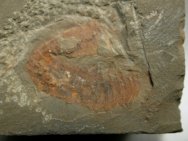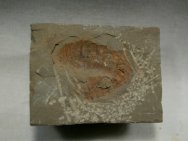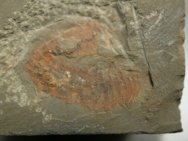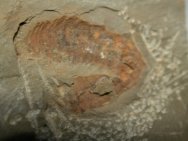Urokodia aequalis
Phylum Arthropoda, Subphylum Crustacea (?), Class Thylacocephala (?)
Geological Time: Early Cambrian (~525 million years ago)
Size: 25 mm long if straight
Fossil Site: Chengjiang Maotianshan Shales Quiongzhusi Section, Yu’anshan Member, Heilinpu Formation, Mafang Village, Haikou County, Kunming, Yunnan Province, China
|
The taxon is only known from Chengjiang, but Hou (1989) notes that it bears some resemblance to the younger Burgess Shale genus Mollisonia that has been found in the younger Kaili Biota of China as well. Its body comprises segments no unlike millipedes. The species derives its name from the equivalent size and approximate appearance of both the posterior and anterior shields. It is thought to have been a bottom-dwelling animal, most likely a scavenger, but little is actually known since the only soft tissue preservation found to date is a stout antenna. Also see: Chengjiang Biota, Chengjiang Fossils, Cambrian Explosion |




